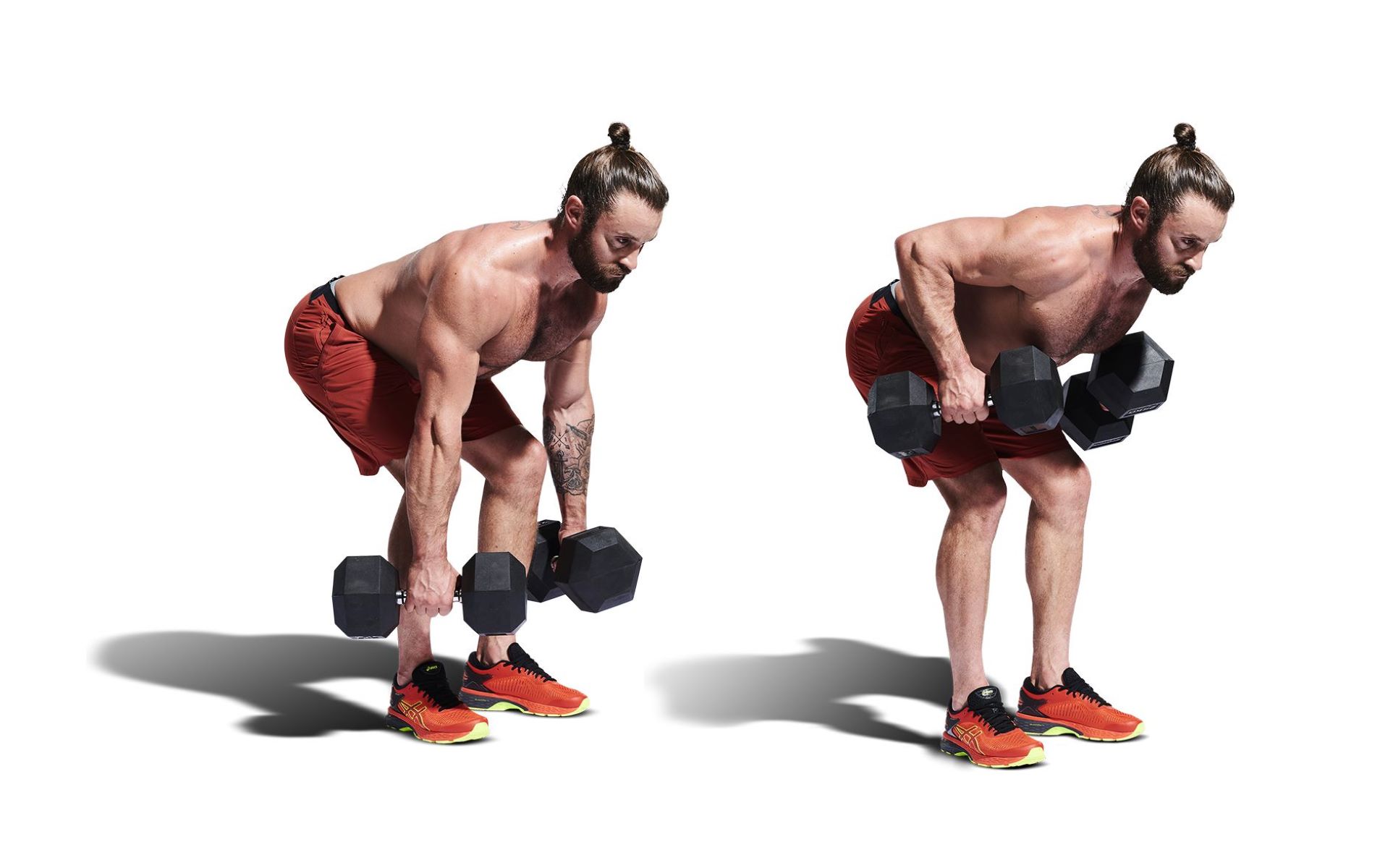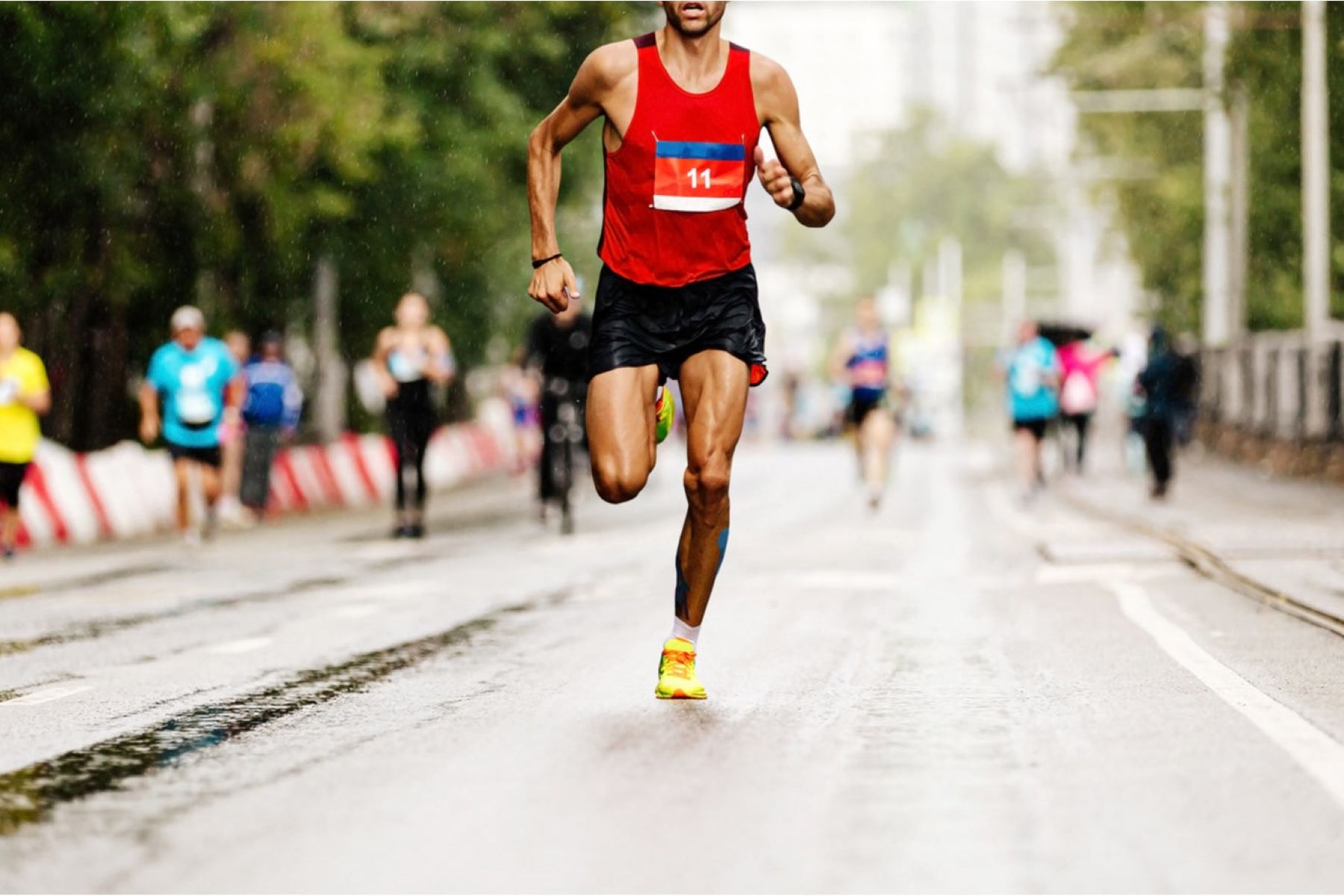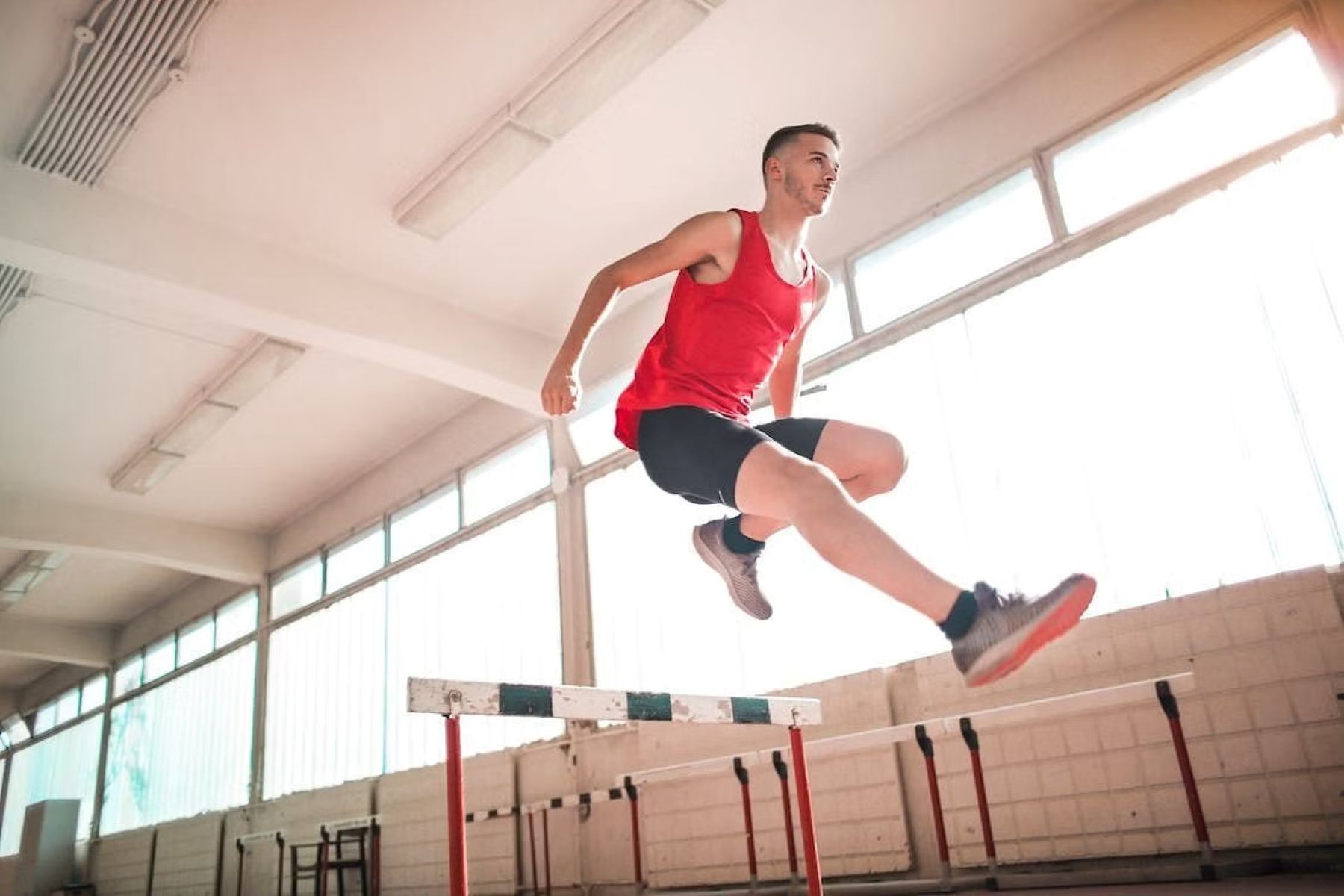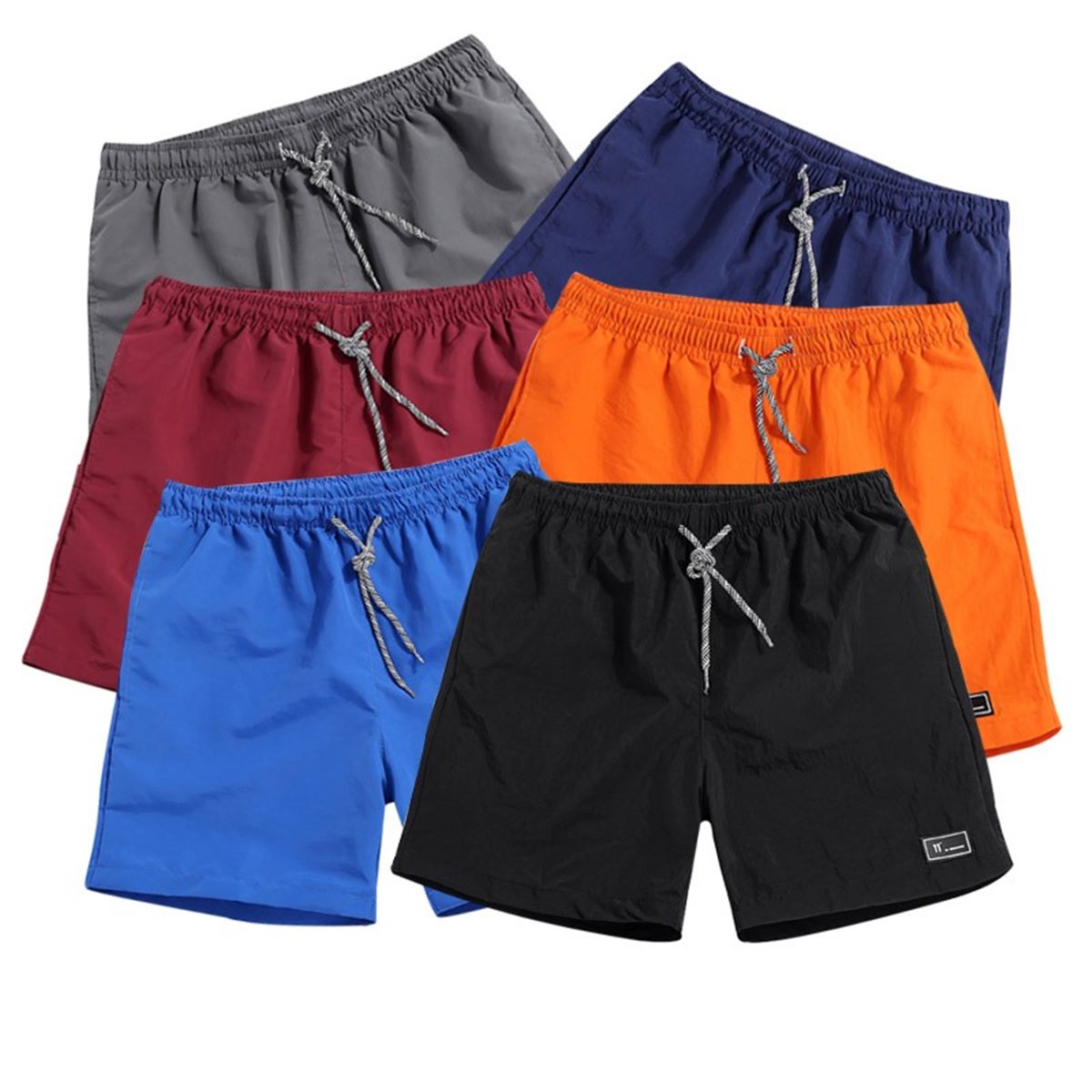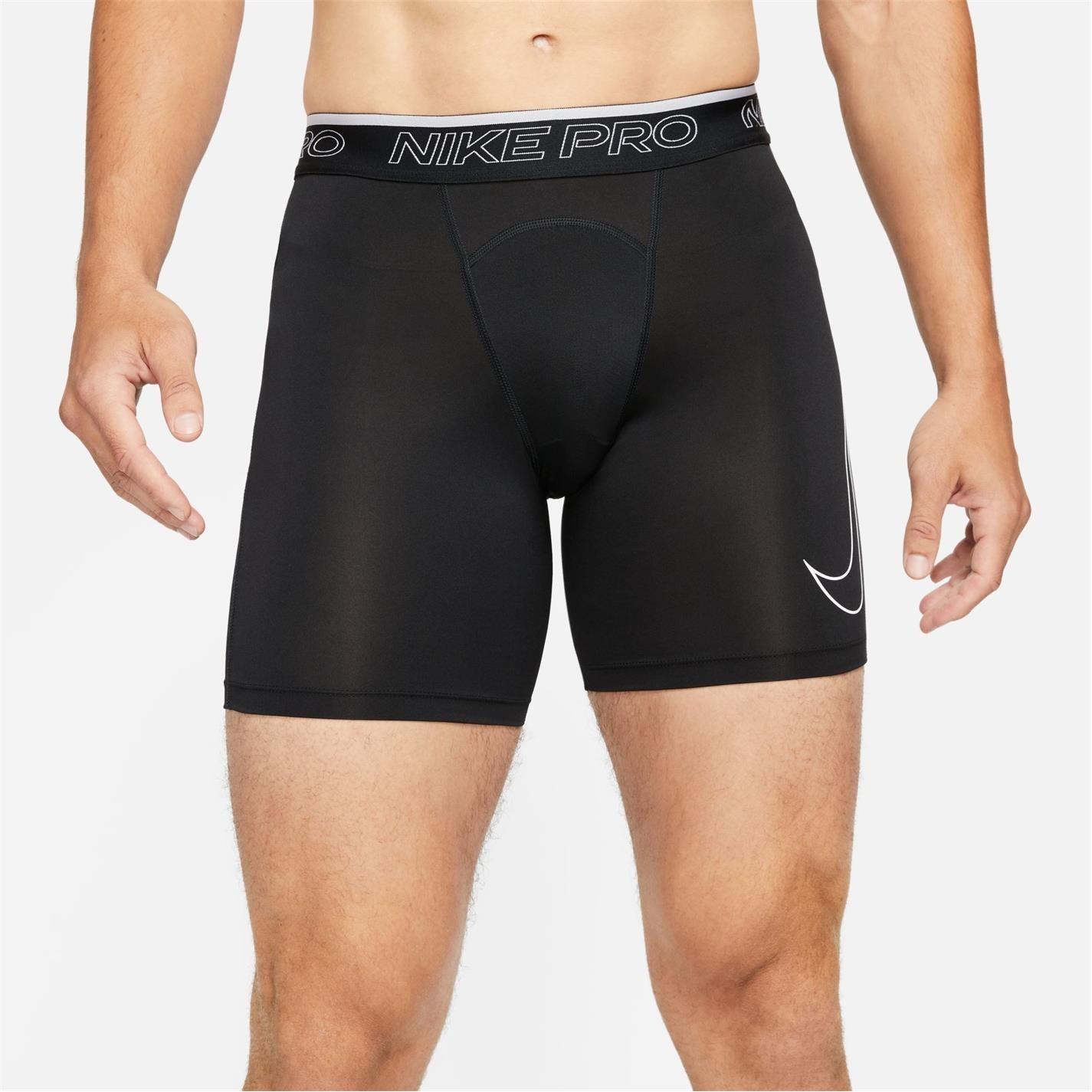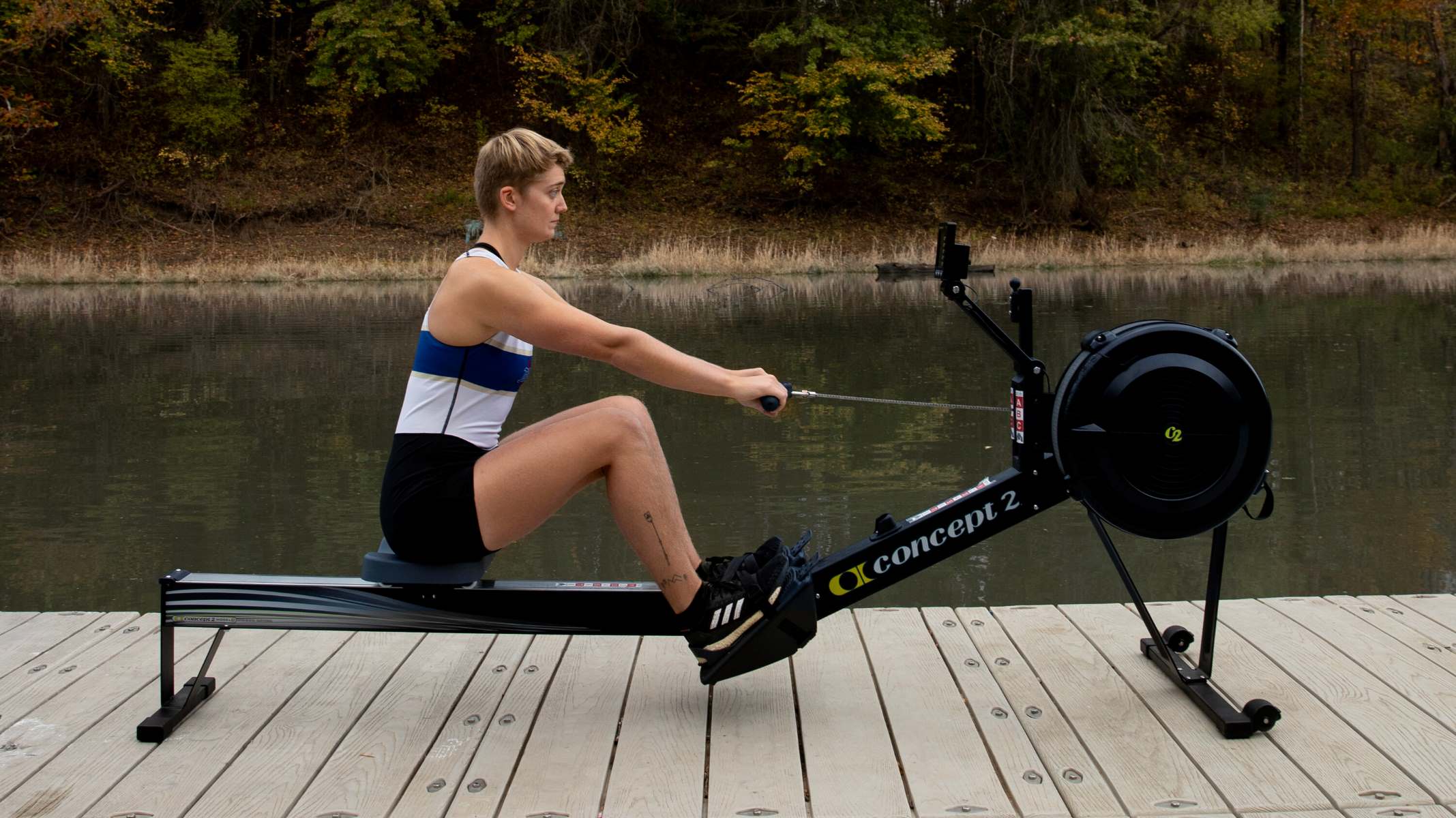

Featured
What Does A Rower Workout
Modified: January 22, 2024
Discover the full-body workout benefits of rowing with our featured rower. Improve cardiovascular health, build strength, and shed pounds in a fun and effective way.
Introduction
Rowing is a highly effective and engaging workout that not only provides a full-body challenge but also offers a myriad of health benefits. Whether you are looking to increase your cardiovascular fitness, build strength, improve posture, or lose weight, rowing is a versatile exercise that can help you achieve your fitness goals.
Unlike other forms of exercise that primarily focus on one or two muscle groups, rowing engages the entire body, making it a truly comprehensive workout. From your legs to your core and arms, every stroke activates and strengthens various muscle groups, helping you develop a balanced physique.
Beyond the physical benefits, rowing also offers a low-impact alternative to other high-intensity workouts, making it accessible to people of all fitness levels and minimizing the risk of injury. Whether you are a seasoned athlete or a beginner, rowing can be tailored to your fitness level and goals.
In this article, we will explore the various benefits of rowing as a workout, including how it works the major muscle groups, its cardiovascular benefits, how it can improve posture and core strength, its efficacy for weight loss and calorie burning, and the different types of rowing workouts you can incorporate into your fitness routine.
So, if you’re curious about rowing or looking to shake up your current workout routine, let’s dive in and discover why rowing is an excellent choice for achieving overall fitness and well-being.
Benefits of Rowing as a Workout
Rowing is a dynamic and versatile exercise that offers an array of benefits for both the body and mind. Whether you prefer indoor rowing on a machine or outdoor rowing on a body of water, here are some compelling reasons to incorporate rowing into your fitness routine:
- Full-body workout: One of the key advantages of rowing is its ability to engage multiple muscle groups simultaneously. From the legs and glutes to the core, back, and arms, rowing requires a coordinated effort from the entire body. This comprehensive workout ensures that no muscle is left untouched, leading to improved overall strength and muscle tone.
- Cardiovascular benefits: Rowing is an excellent cardio exercise, elevating your heart rate and improving cardiovascular health. The repetitive motion of rowing at a moderate to high intensity helps strengthen the heart and lungs, contributing to better endurance and increased energy levels.
- Improved posture: Regular rowing workouts can do wonders for your posture. As you row, you engage the muscles in your back, shoulders, and core, which play a crucial role in maintaining proper alignment. Strengthening these muscles can help correct postural imbalances, alleviate back pain, and promote a more upright and confident stance.
- Core strength and stability: Rowing relies heavily on the muscles in your core for stability and power. As you drive through each stroke, your abs, obliques, and lower back muscles engage to maintain a strong and stable base. Consistent rowing can lead to a stronger core, improved balance, and enhanced athletic performance.
- Weight loss and calorie burning: Rowing is a highly effective workout for burning calories and losing weight. It is estimated that a person weighing approximately 155 pounds can burn about 300-500 calories in a 30-minute rowing session, depending on the intensity level. Rowing combines strength and cardio, making it a great option for those looking to shed pounds and achieve a leaner physique.
- Low-impact exercise: Unlike activities such as running or jumping, where the joints endure significant impact, rowing is a low-impact exercise. This means less stress on the joints, making it suitable for individuals with joint issues, older adults, or those recovering from injuries. Rowing allows you to get an intense workout without putting excessive strain on your joints.
With its wide range of benefits, rowing offers a comprehensive and efficient workout that can help you reach your fitness goals. Whether you want to improve strength, boost cardiovascular health, tone your body, or lose weight, rowing provides a challenging and accessible option for people of all fitness levels.
How Rowing Works the Major Muscle Groups
Rowing is a unique exercise that engages and strengthens a variety of major muscle groups throughout the body. By understanding how rowing works these muscles, you can fully appreciate the comprehensive nature of this workout. Here’s a breakdown of the key muscle groups targeted during rowing:
- Legs: The primary power source in rowing comes from the legs. As you drive off the footplates, the muscles in your quads, hamstrings, and glutes contract, generating the initial force to move the rowing machine or propel the boat forward.
- Core: A strong and stable core is essential for maintaining proper form during rowing. Your core muscles, including your abs, obliques, and lower back, engage to support the spine and provide stability as you lean back and drive the rowing stroke.
- Back: The muscles in your upper and lower back play a significant role in rowing. The lats, rhomboids, and traps initiate the pulling motion as you bring the handle towards your body, while the erector spinae muscles in your lower back work to maintain proper posture throughout the stroke.
- Shoulders and arms: Your shoulders and arms contribute to the pulling motion in rowing. The deltoids, biceps, and triceps work together to complete the stroke by extending your arms and pulling the handle towards your body. These muscles play a crucial role in generating power and maintaining control during the rowing motion.
- Glutes and hips: The glute muscles, specifically the gluteus maximus and gluteus medius, are engaged during the leg drive phase of rowing. These muscles help to stabilize the hips and provide additional power during the stroke.
Rowing requires coordination and synchronization of these major muscle groups, creating a harmonious and efficient chain of movement. The continuous repetition of rowing strokes not only strengthens these muscles but also improves their endurance and coordination.
Moreover, the push and pull nature of the rowing motion engages both the concentric (muscle shortening) and eccentric (muscle lengthening) contractions, resulting in a balanced and functional workout for the entire body.
By consistently incorporating rowing into your fitness routine, you can develop a well-rounded physique that is not only strong but also symmetrical. Whether you strive for toned legs, a strong core, a defined back, or powerful shoulders, rowing provides a comprehensive solution for working and sculpting the major muscle groups throughout your body.
Cardiovascular Benefits of Rowing
Rowing is not only a great strength training workout but also an excellent cardiovascular exercise that can significantly improve your heart health and overall endurance. Here are some key cardiovascular benefits of incorporating rowing into your fitness routine:
- Increased heart rate: During a rowing session, your heart rate increases as your body works to deliver oxygen and nutrients to the working muscles. Consistently elevating your heart rate strengthens the heart muscle, improves its efficiency, and enhances overall cardiovascular fitness.
- Improved lung capacity: Rowing requires rhythmic and controlled breathing, which helps increase lung capacity over time. The deep breaths taken during the rowing strokes expand the lungs and improve their ability to take in oxygen, ensuring a steady supply of oxygen to the muscles and promoting better respiratory health.
- Enhanced endurance: Regular rowing workouts improve your body’s ability to endure prolonged physical activity. As you challenge yourself with longer rowing sessions or increase the intensity, your muscles become more efficient at utilizing oxygen, delaying the onset of fatigue, and allowing you to sustain physical activity for extended periods.
- Lowered blood pressure: Rowing is an effective way to reduce high blood pressure. The combination of increased cardiovascular activity, improved heart function, and reduced stress levels can help lower both systolic and diastolic blood pressure readings, contributing to better overall heart health.
- Reduced risk of cardiovascular diseases: Regular aerobic exercise, such as rowing, has been shown to lower the risk of developing cardiovascular diseases. Engaging in rowing workouts can help regulate cholesterol levels, maintain healthy blood sugar levels, and reduce the risk of conditions such as heart disease, stroke, and diabetes.
- Weight management: Rowing is an effective calorie-burning exercise that can aid in weight management. When combined with a balanced diet, rowing can help create a calorie deficit, leading to weight loss or maintenance. Maintaining a healthy weight reduces the risk of obesity-related cardiovascular issues.
It’s important to incorporate both strength training and cardiovascular exercise into your fitness routine for optimal health. Rowing provides the perfect combination, offering a challenging resistance workout while also improving cardiovascular fitness. By consistently rowing, you can enhance your heart health, increase your endurance, and reduce the risk of cardiovascular diseases.
Remember to start gradually and listen to your body. Gradually increase the intensity and duration of your rowing workouts as your fitness level improves. Whether you row indoors on a machine or venture out onto the water, embrace the cardiovascular benefits of rowing to elevate your overall fitness and achieve a healthier, stronger, and more resilient body.
Improving Posture and Core Strength through Rowing
Rowing is not only a fantastic cardiovascular exercise and full-body workout but also an effective way to improve posture and strengthen your core muscles. Whether you spend long hours sitting at a desk or have developed poor posture habits, rowing can help correct alignment issues and build a strong and stable core. Here’s how rowing can benefit your posture and core strength:
- Alignment and spinal stability: Rowing requires a straight and upright posture while seated on the rowing machine or in a boat. By practicing proper alignment during rowing sessions, you train your body to maintain a natural spinal curve, improving overall posture and reducing the risk of developing postural imbalances.
- Engagement of core muscles: Rowing heavily engages the muscles of your core, including your abdominals, obliques, and lower back. As you perform rowing strokes, these muscles work together to stabilize your torso and generate power. Over time, consistent rowing strengthens your core, resulting in better balance, stability, and overall core strength.
- Improved muscle balance: Poor posture often results from muscle imbalances, with some muscles being weak or tight while others are underactive. Rowing helps address these imbalances by working both the anterior and posterior muscle chains. The pulling motion targets the muscles in your upper back, which are often weakened due to slouching, while the pushing motion engages the chest and shoulder muscles, promoting balance between the front and back of your body.
- Correcting rounded shoulders: Many people struggle with rounded shoulders due to poor posture and desk-bound lifestyles. Rowing actively engages the muscles responsible for retracting the shoulders and pulls them back into a more natural position. This helps undo the effects of rounded shoulders, improving overall posture and reducing the risk of shoulder-related injuries.
- Enhanced core stability: The core muscles act as a stabilizer during rowing. By strengthening these muscles, you improve your ability to maintain stability and control throughout the rowing motion. This carries over to other activities and everyday movements, reducing the risk of injury and enhancing overall performance.
- Improved muscle endurance: Rowing requires sustained effort from your core muscles, which helps improve their endurance. As you progress with rowing, you’ll find it easier to maintain the proper posture and engage your core for an extended period. This increased endurance translates to better posture in daily life, as your core muscles are better equipped to support your spine and maintain proper alignment.
By incorporating rowing into your fitness routine, you can take significant strides towards improving your posture and strengthening your core. Focus on maintaining proper alignment and engaging your core throughout each stroke to maximize the benefits. Additionally, combining rowing with exercises that target specific postural muscles, such as shoulder retractions and core stabilization exercises, can further enhance your results.
Remember, consistency is key. Regular rowing workouts, coupled with conscious effort to maintain good posture in daily life, can gradually reshape your body and improve your overall posture. So, grab an oar or hop on that rowing machine and begin your journey toward better posture and a stronger core.
Rowing for Weight Loss and Calorie Burning
If you’re looking to shed some pounds and burn calories efficiently, rowing can be an excellent addition to your weight loss journey. Rowing is a highly effective full-body workout that engages multiple muscle groups, elevates your heart rate, and torches calories. Here’s why rowing is a fantastic choice for weight loss and calorie burning:
- High-intensity calorie burn: Rowing is a high-intensity exercise that can help you burn a significant amount of calories in a short amount of time. The combination of both cardiovascular and strength elements in rowing leads to an increased metabolic rate, allowing you to continue burning calories even after your workout.
- Total body engagement: Rowing is a full-body workout that engages muscles throughout your body, from your legs and core to your arms and back. The more muscle groups you engage, the more calories you burn. Rowing effectively targets both large muscle groups, such as your legs, as well as smaller stabilizing muscles, resulting in a comprehensive calorie-burning workout.
- Continuous movement: Rowing is a continuous and rhythmic activity that keeps your heart rate elevated throughout your workout. This sustained effort helps you burn calories consistently and efficiently. Whether you row at a steady pace or perform high-intensity interval training (HIIT) on the rowing machine, the continuous movement ensures a continuous calorie burn.
- Versatile intensity levels: Rowing allows you to adjust the intensity to suit your fitness level and weight loss goals. Whether you’re a beginner or an experienced athlete, you can modify the resistance level, stroke rate, and duration of your rowing sessions to challenge yourself and increase calorie burn over time.
- Low-impact exercise: Rowing is a low-impact exercise that puts minimal stress on your joints. It provides a great calorie-burning alternative for individuals with joint issues or those who prefer low-impact workouts. Rowing allows you to get your heart rate up and burn calories without placing excessive strain on your joints.
- Efficient time commitment: If you have a busy schedule, rowing can be a great option for calorie burning. With rowing, you can achieve a highly effective full-body workout in a relatively short amount of time. By performing intense rowing intervals or longer steady-state rowing sessions, you can maximize calorie burn while optimizing your time.
Incorporating rowing into your weight loss journey can provide a fun and challenging way to burn calories and shed pounds. However, it’s important to remember that weight loss is a holistic process that involves a combination of diet, exercise, and overall lifestyle changes. Consistency, combined with a healthy and balanced diet, is key to achieving sustainable weight loss results.
Whether you choose to row on a machine or prefer the experience of rowing on water, make rowing a regular part of your fitness routine. Aim for at least three to five rowing sessions per week, gradually increasing the duration and intensity as you progress. With time and commitment, rowing can help you reach your weight loss goals and improve your overall fitness.
Rowing as a Low-Impact Workout Option
Rowing is not only a highly effective and versatile workout, but it is also a low-impact exercise that puts minimal stress on your joints. Whether you’re dealing with joint issues, looking for a safe form of exercise, or simply prefer activities that are gentle on your body, rowing provides a fantastic low-impact workout option. Here’s why rowing is an excellent choice for those seeking a low-impact exercise:
- Gentle on the joints: Unlike activities such as running or jumping, which can create significant impact on your joints, rowing has a smooth and gliding motion. The fluid movement of rowing on a machine or through the water minimizes the stress on your ankles, knees, and hips, making it a safe and joint-friendly exercise.
- Reduced risk of injury: Rowing is a controlled and controlled exercise that allows you to work out without putting excessive strain on your body. The seated position and guided motion of rowing help maintain proper alignment and reduce the risk of injuries commonly associated with high-impact activities, such as sprains, strains, or stress fractures.
- Accessible for all fitness levels: Rowing is a versatile exercise that can be adapted to accommodate individuals of all fitness levels. Whether you’re a beginner or a seasoned athlete, you can modify the resistance, stroke rate, and duration of your rowing sessions to match your fitness level and gradually increase intensity as you progress.
- Minimal muscle soreness: Rowing provides a full-body workout without the excessive muscle soreness often associated with high-impact exercises. While you may still experience some muscle fatigue and soreness as you challenge your muscles, rowing’s low-impact nature allows for a quicker recovery period and reduces the likelihood of muscle strains or joint inflammation.
- Safe for rehabilitation: Rowing is often recommended as a form of low-impact exercise during the rehabilitation process. Its controlled nature and minimal strain on the joints make it an ideal option for individuals recovering from injuries or surgeries, as it helps improve strength and range of motion without aggravating existing conditions.
- Versatile and enjoyable: Rowing offers a variety of options to suit your preferences and needs. Whether you choose to row on a machine at the gym, participate in indoor group rowing classes, or go for outdoor rowing adventures on a body of water, you can enjoy the benefits of a low-impact workout while having fun and exploring different environments.
By choosing rowing as a low-impact workout option, you can reap the benefits of a full-body workout without compromising the health and longevity of your joints. Remember to start at a comfortable intensity, focus on maintaining proper form, and gradually increase the duration and intensity of your rowing sessions as your body adapts and becomes stronger.
Whether you’re recovering from an injury, looking for a joint-friendly exercise, or simply want to diversify your fitness routine, rowing provides a safe, effective, and enjoyable low-impact workout that can be tailored to your specific needs and fitness goals.
Rowing Technique and Form
Proper rowing technique and form are essential for maximizing the benefits of your workout, preventing injuries, and achieving optimal performance. Whether you’re a beginner or an experienced rower, it’s crucial to understand the key elements of rowing technique. Here are some tips to help you maintain proper form throughout your rowing sessions:
- Starting position: Sit on the rowing machine or in the boat with your feet securely fastened to the footplates. Position yourself with a slight forward lean, keeping your back straight and your core engaged. Hold the handle with an overhand grip, slightly wider than shoulder-width apart.
- Leg drive: Initiate the stroke by pushing through your legs, driving against the footplates. Extend your legs while maintaining a strong core and an upright posture. This leg drive should be explosive and powerful, providing the primary force for the stroke.
- Body swing: As your legs reach full extension, begin to hinge your body back at the hips. Lean your torso back, maintaining a strong and engaged core. Avoid over-arching your back, as this can lead to strain or discomfort. Keep your shoulders relaxed and down, away from your ears.
- Arm pull: Once your body is leaning back, initiate the pull with your arms. Pull the handle towards your body by bending your elbows and squeezing your shoulder blades together. Keep your wrists straight and avoid excessive wrist flexion or extension.
- Finish position: Once the handle has reached your body, lean your upper body slightly back. Your legs should be extended, your core engaged, and your arms pulled in towards your body. Hold this position for a brief pause before initiating the recovery phase.
- Recovery phase: To return to the starting position, follow the reverse sequence of movements. Extend your arms forward, allowing the handle to move away from your body. Hinge forward at the hips, bringing your upper body forward while keeping your back straight. Once your body is in a slightly forward position, bend your knees and slide back up the slide, returning to the starting position.
- Stroke rate: Row at a pace and stroke rate that is comfortable for you. Beginners may start with a slower stroke rate and gradually increase it as they become more proficient. Experienced rowers may aim for a higher stroke rate, depending on the desired intensity and workout goals.
Remember, rowing is a coordinated and fluid movement. Focus on maintaining proper technique and fluidity throughout each stroke. Avoid jerky or abrupt movements, as this can lead to strain or injury.
It’s also important to listen to your body and start at a level that matches your fitness and experience. As you become more comfortable with rowing, you can gradually increase the intensity, duration, and stroke rate to challenge yourself and optimize your workout.
Consider working with a rowing instructor or coach to ensure that you are using proper technique and to receive personalized guidance. They can help refine your form, provide feedback, and help you progress in your rowing journey.
By focusing on proper rowing technique and form, you can maximize the effectiveness of your workouts, minimize the risk of injuries, and enjoy the many benefits that rowing has to offer.
Types of Rowing Workouts
Rowing offers a wide range of workout options to suit different fitness levels, goals, and preferences. Whether you’re looking for a high-intensity interval training session or a steady-state endurance workout, here are some popular types of rowing workouts to consider:
- Steady-State Rowing: This is a longer-duration, lower-intensity workout where you maintain a consistent pace throughout. Steady-state rowing is great for building cardiovascular endurance and improving overall rowing technique. Aim for a moderate intensity that allows you to sustain a conversation while rowing comfortably.
- Interval Training: Interval training involves alternating periods of high-intensity work with active recovery periods. For example, you can row at a fast pace for a set time or distance, followed by a slower pace to recover. This type of workout helps improve aerobic and anaerobic fitness, boosts calorie burn, and enhances overall rowing performance.
- Pyramids: Pyramid workouts involve gradually increasing and then decreasing the intensity or duration of each interval. Start with shorter, intense intervals and progressively lengthen them until reaching a peak. Then, decrease the intensity in the same pattern. Pyramids provide a challenging and dynamic workout that targets various energy systems and helps improve both speed and endurance.
- Tabata Intervals: Tabata workouts are high-intensity interval training sessions that follow a specific pattern: 20 seconds of all-out effort followed by 10 seconds of rest, repeated for a total of four minutes. This protocol can be applied to rowing, alternating between maximum-effort rowing and brief periods of rest. Tabata intervals are time-efficient and effective for improving fitness levels and fat burning.
- Long-Distance Rowing: Long-distance rowing workouts involve rowing for an extended duration, typically over 30 minutes or more. This type of workout focuses on building endurance and mental toughness. It’s an excellent choice for those training for longer events or looking to challenge themselves with prolonged rowing sessions.
- Power-Strokes: Power-stroke workouts are designed to maximize power during each stroke. These workouts typically involve shorter bursts of high-intensity rowing, where you focus on explosive leg drive and strong pulls. Power-stroke workouts help develop explosive power, strength, and speed for rowing races or high-intensity fitness goals.
- Active Recovery: Active recovery sessions are lighter workouts performed at a low intensity. They aim to promote recovery, increase blood flow, and prevent muscle stiffness or soreness. Active recovery rowing can be done at a slower pace or with reduced resistance, providing a gentle workout while allowing your body to recover from more intense training sessions.
It’s important to mix up your rowing workouts to keep your routine engaging and challenge different energy systems. Incorporating a combination of steady-state, interval, and other workout types can help you improve your fitness, prevent plateaus, and avoid boredom.
When choosing a rowing workout, consider your fitness level, goals, and available time. Start with workouts that match your current fitness level and gradually progress in duration, intensity, or complexity as you become fitter and more comfortable with rowing.
Remember to warm up before each rowing session and cool down afterward with light stretching or foam rolling to prevent injuries and aid in recovery.
Whether you’re aiming to improve endurance, boost speed, burn calories, or simply enjoy a varied and challenging workout, there’s a rowing workout style for you. Explore different types of rowing workouts to keep your fitness routine exciting, effective, and rewarding.
Incorporating Rowing into Your Fitness Routine
Rowing can be a valuable addition to your fitness routine, providing a full-body workout, cardiovascular benefits, and low-impact exercise. Whether you’re new to rowing or a seasoned athlete, here are some tips to help you incorporate rowing into your fitness routine:
- Set clear goals: Determine your fitness goals and how rowing aligns with them. Whether you’re aiming to improve strength, increase endurance, lose weight, or enhance overall fitness, setting clear goals will give you direction and motivation in your rowing journey.
- Start gradually: If you’re new to rowing, start with shorter and less intense sessions to allow your body to adapt. Focus on maintaining proper technique and form. As you build strength, endurance, and confidence, gradually increase the duration and intensity of your rowing workouts.
- Include a variety of workouts: Switching up your rowing workouts helps prevent boredom and challenges your body in different ways. Incorporate a mix of steady-state rowing, interval training, pyramids, power-strokes, and long-distance rowing to keep your routine diverse and exciting.
- Combine rowing with other exercises: To achieve a well-rounded fitness routine, combine rowing with other types of exercises. Incorporate strength training to build muscle, flexibility exercises to improve mobility, and other cardiovascular activities to maintain a balanced fitness regimen.
- Schedule regular sessions: Aim for consistency by scheduling dedicated rowing sessions into your weekly routine. Whether you prefer morning or evening workouts, having a set schedule will help you stay accountable and make rowing a regular part of your fitness routine.
- Track your progress: Keep a record of your rowing sessions to monitor your progress and see improvements over time. Note the distance covered, stroke rate, duration, and any personal bests. Tracking your progress can be motivating and give you a sense of accomplishment as you see your endurance, strength, and rowing performance improve.
- Seek guidance and instruction: Consider working with a rowing instructor or coach, especially if you’re new to rowing or looking to refine your technique. They can provide guidance, feedback, and personalized workouts to help you reach your specific goals and optimize your rowing experience.
- Listen to your body: Pay attention to how your body feels during and after rowing workouts. Rest when needed and take recovery days to allow your muscles to repair and adapt. Rowing should challenge you, but not to the point of pain or excessive fatigue. Always prioritize your safety and well-being.
Remember, everyone’s fitness journey is unique, and it’s important to find what works best for you. Customize your rowing routine to suit your fitness level, preferences, and goals. Consistency, balance, and enjoyment are key to incorporating rowing into your fitness routine successfully.
Whether you choose to row on a machine at the gym or venture out onto the water, embrace the versatility and benefits of rowing as you work towards a fitter, stronger, and more resilient body.
Conclusion
Rowing offers a remarkable combination of full-body workout, cardiovascular benefits, low-impact exercise, and versatility that makes it a valuable addition to any fitness routine. Whether you’re seeking strength, improved posture, weight loss, or overall fitness, rowing has something to offer for everyone.
By engaging major muscle groups such as the legs, core, back, shoulders, and arms, rowing provides a comprehensive workout that helps build strength, tone muscles, and enhance athletic performance. The rhythmic and controlled nature of rowing ensures that it is a low-impact exercise, reducing the stress on your joints while still delivering an effective workout.
The cardiovascular benefits of rowing are significant, improving heart health, lung capacity, endurance, and weight management. With its versatility in intensity levels, rowing can be adjusted to meet the needs and fitness levels of individuals at any stage, from beginners to elite athletes.
Proper rowing technique and form are crucial for maximizing the effectiveness of your workouts and minimizing the risk of injuries. By starting gradually, focusing on maintaining good form, and challenging yourself with a variety of workouts, you can experience the full benefits of rowing and achieve your fitness goals.
Incorporating rowing into your fitness routine requires setting clear goals, planning regular sessions, and tracking your progress. Don’t hesitate to seek guidance and instruction if needed, as working with a rowing instructor or coach can help you optimize your technique and progress.
Ultimately, your fitness journey is unique to you. It’s important to listen to your body, find joy in the process, and make rowing an enjoyable part of your life. Whether you choose to row indoors on a machine or venture out onto the open water, embrace the versatile and rewarding nature of rowing as you embark on a path to a fitter, healthier, and stronger you.
